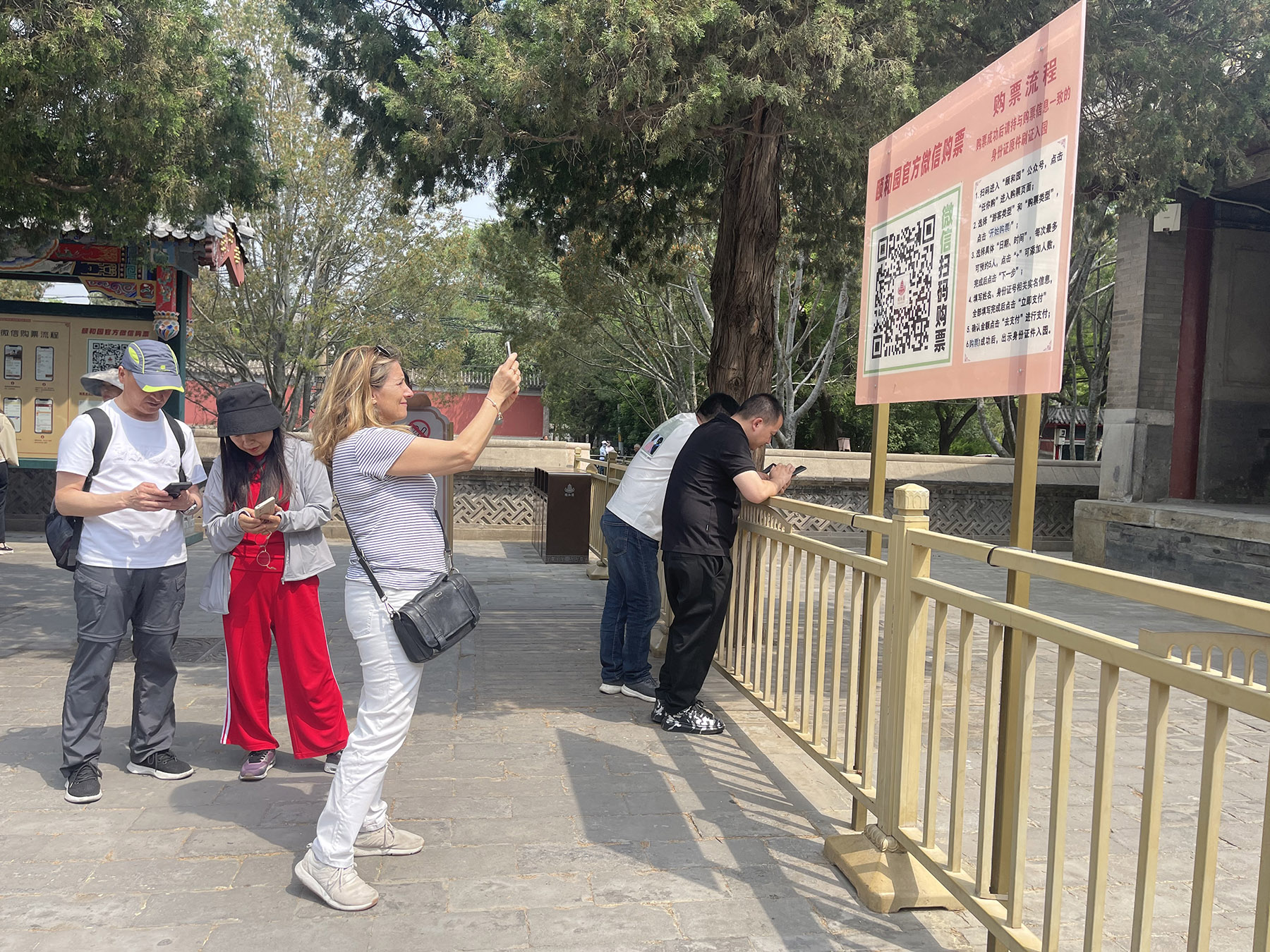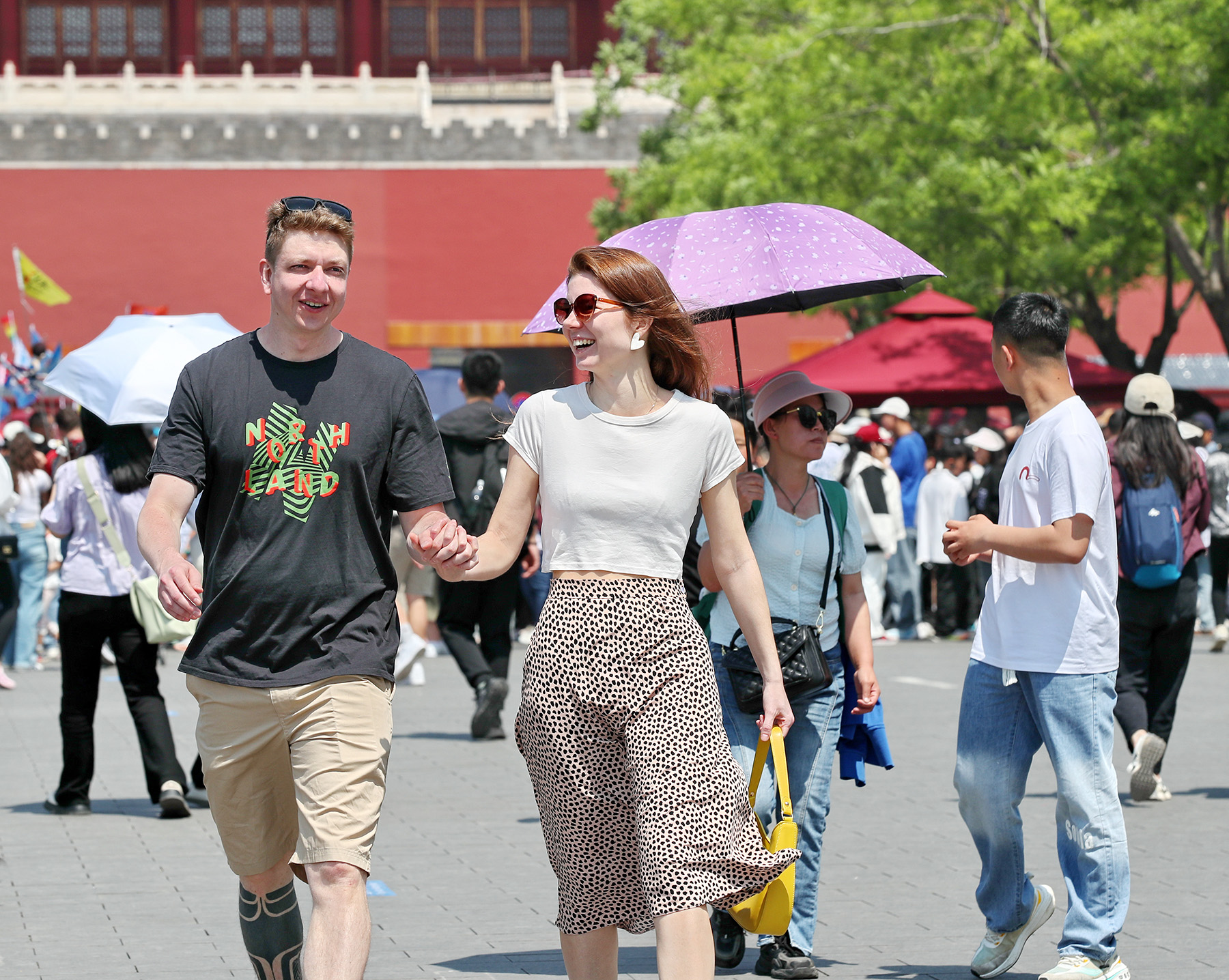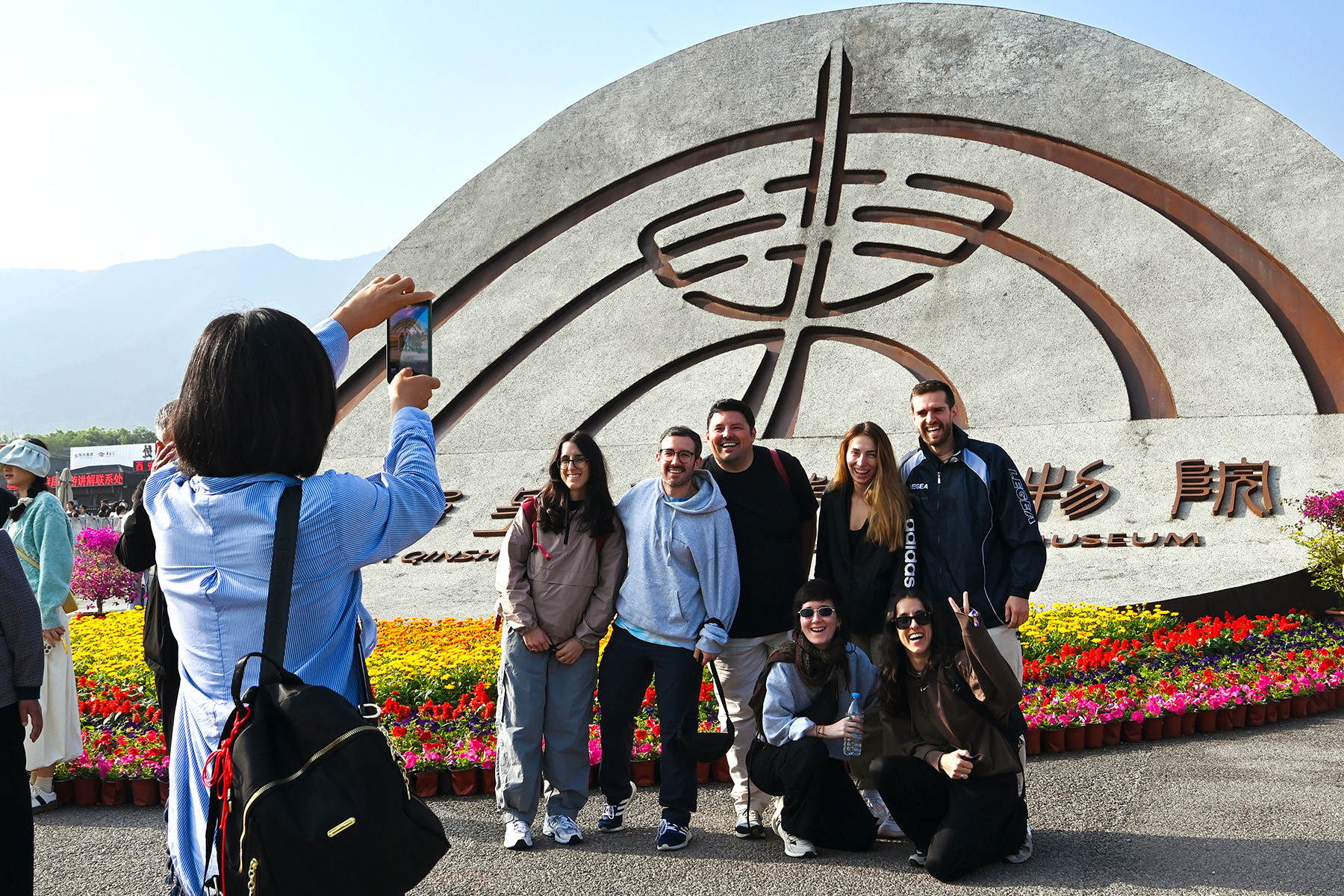Enhanced services and visa policies see an increasing number of international tourists, Yang Feiyue reports.

Veronique Gallo took out her phone and scanned a QR code in front of the entrance of the Summer Palace last Friday.
The French tourist from Grasse kicked off her three-week trip to China with two of her friends in the capital city.
She adroitly filled in the names and passport numbers of her friends on her WeChat account before hitting the payment button.
The whole process took less than two minutes to get an access code for all three to enter the imperial park, where they were impressed by the vast lake, large islands, traditional halls and pavilions studding the imperial park.
"We are here to explore the changes to the city," says Gallo, who used to work for a French company in Beijing between 2006 and 2010.
"The streets are cleaner and wider, but people are still very friendly," she adds.
Gallo says she was encouraged to visit by the positive signals from a series of favorable tourism policies that have been rolled out by the Chinese government.
READ MORE: China's visa-free policy ignites European enthusiasm
In November, visa-free policies were implemented for passport holders from France, Germany, Italy, the Netherlands, Spain and Malaysia.
In March, China announced it would grant visa-free entry on a trial basis to visitors from Switzerland, Ireland, Hungary, Austria, Belgium and Luxembourg.
According to the Foreign Ministry, from March 14 to Nov 30, passport holders from these six countries would be able to enter China without a visa for up to 15 days for business, tourism, family visits and transit purposes.
Right after the May Day holiday, the government decided to extend the visa-free policy for short-term visits for the 12 above-mentioned countries until the end of 2025.
"It's clear that we are being welcomed to visit," Gallo says.

After Beijing, she and her friends will go on to explore Zhangjiajie in Hunan province, Yangshuo county in Guilin in the Guangxi Zhuang autonomous region, and Shanghai.
"We'd love to see the country's varied landscapes while taking in its metropolitan vibe," she says.
Gallo is among the rising number of inbound travelers to China, as the country welcomes visitors with open arms.
In addition to more convenient customs policies, tourism officials have been working on the launch of targeted measures to remedy existing problems in the market to sustain the growth of international travelers.
The Ministry of Culture and Tourism in March said it will make it easier for payments at places such as tourist attractions, cultural and performance venues and star-rated hotels. This includes promoting the creation of software and hardware facilities for accepting mobile payments, bank cards, and cash at all national 5A and 4A tourist attractions, national and provincial tourist resorts, and national-level tourist leisure districts.
The ministry said it will cooperate with the relevant departments to promote the creation of foreign-currency exchange service points, and make sure all tourist attractions retain staffed windows offering ticket services for inbound travelers, while English-language online reservations will also be available.
Key tourist attractions will also be encouraged to improve multilingual signage and guide facilities, and to continue improving their foreign-language services.
The release of these policies led to an upsurge in foreign tourist arrivals.
The National Immigration Administration tracked a three-fold increase in the number of international arrivals in the first quarter of the year, as compared with the same period last year.
The total number of visas issued to foreigners reached 466,000, an increase of 118.8 percent year-on-year, while the number of visa-free foreign visitors entering the country reached 1.99 million, a year-on-year increase of 266.1 percent, the administration reports.
International visitors have been primarily coming to China for tourism and sightseeing purposes, accounting for more than 30 percent of arrivals, followed by those coming for business, to visit relatives, and for other purposes, according to the online travel company Trip.com Group.
The agency said its inbound tourism orders have more than tripled compared to the same period last year.

Many foreign tourists have said that they are experiencing changes during travel in the country, with more convenient entry procedures and services, such as payment, ticket booking, and transportation, the travel operator says.
The company's data revealed that the main origins of inbound travelers over the first three months were Japan, Malaysia, South Korea, the United States, Australia, the United Kingdom, Thailand, Vietnam, Canada and Russia.
The effect of the visa-free policy on inbound tourism is evident, says Wang Yalei, an analyst from the research center at Trip.com.
As China has officially implemented unilateral visa-free trials for France, Germany, Italy, the Netherlands, Spain, and Malaysia, the number of tourists from these six countries visiting China increased by about six-fold year-on-year, the agency reports.
Compared to the first quarter of 2019, there has been almost no change in the top 20 source countries for inbound tourism to China, Wang observes.
However, countries with a higher rate of international flight resumptions or which enjoy visa-free policies have shown higher growth rates.
For example, Malaysia has risen from the 8th place in 2019 to 2nd place this year, and Russia has risen from 16th to 10th place, he says.
In terms of growth rate, compared to the first quarter of 2019, visitors from neighboring countries, such as Malaysia, Mongolia, Kazakhstan, Vietnam, Thailand and Indonesia, are prominent, according to the travel agency.
Top city destinations among inbound travelers this year are Shanghai, Beijing, Guangzhou and Shenzhen in Guangdong province, and Chengdu in Sichuan province, the agency reveals.
Theme parks and major scenic spots with distinctive offerings, such as the Palace Museum and the Emperor Qinshihuang's Mausoleum Site Museum, are among international travelers' favorites, it adds.
Additionally, cultural programs, including traditional Chinese medicine massage, wearing ethnic costumes and village soccer games, have all seen a rising number of international visitors.

Ning Guoxin, a senior officer with Beijing-based tourism service provider Utour Group, says the company has started to receive a rising number of inbound visitors for business exchange since the end of last year.
"They have been mainly from Central Asia and Middle East, and the inflow of inbound travelers has been consistent," Ning says.
In mid-May, the company expects to receive more than 200 travelers from Asia, Europe, the US, Japan and South Korea.
"Inbound travelers actually will be more sensitive to positive inbound tourism policies, as they tend to have shorter time for travel planning and arrangements," Ning says, adding that convenient travel procedure will make things much easier for them.
"They will feel the welcoming attitude of our country, which is surely good news in the long run," he says.
The company has been developing themed travel offerings for inbound customers.
"They tend to stay longer, mostly for more than eight days, so they will cover more destinations," Ning says.
ALSO READ: Foreign tourist visits see holiday upsurge
"So we need to make the arrangements more relevant, like making destinations connected to themes like the Yellow River, the Great Wall and the Yangtze River, for them to feel better related to their experiences and appreciate our culture," Ning explains.
Simone Zhao from China Horizon Travel, which specializes in arranging tours for individual travelers from Europe, says she has seen continuous growth in orders.
"They say they have felt the efforts we have been making to make travel more comfortable," Zhao says.
Having been engaged in the inbound tourism business for more than three decades in China, Zhao says she can personally see things have positively changed for international travelers since late last month.
Although some things are still to be desired, like more foreign language services for taxi hailing or payment methods, Zhao believes they will be addressed soon, as policies have already been put in place.
"I'm looking forward to seeing more positive feedback from our guests in the future," she says.
Contact the writer at yangfeiyue@chinadaily.com.cn


